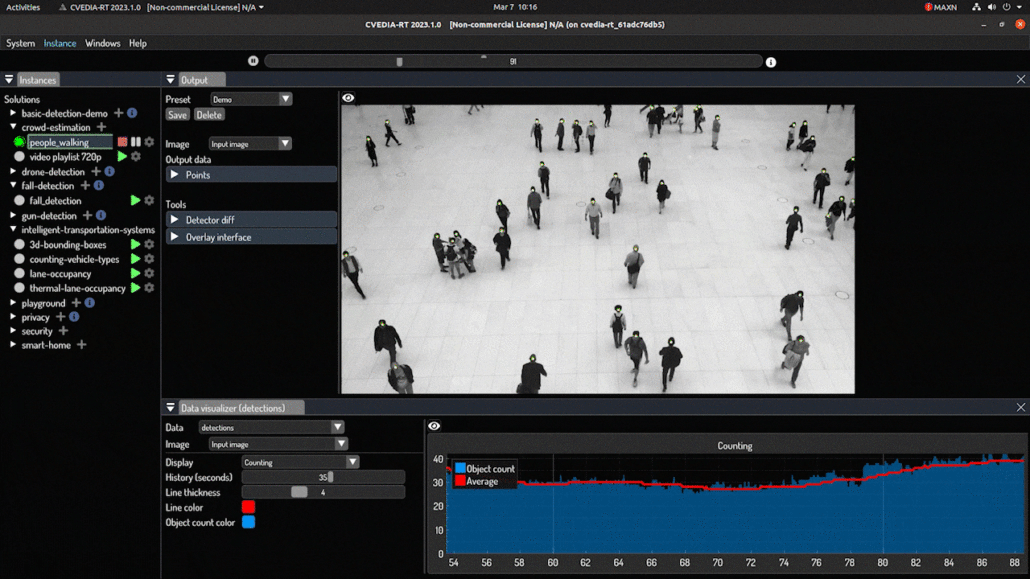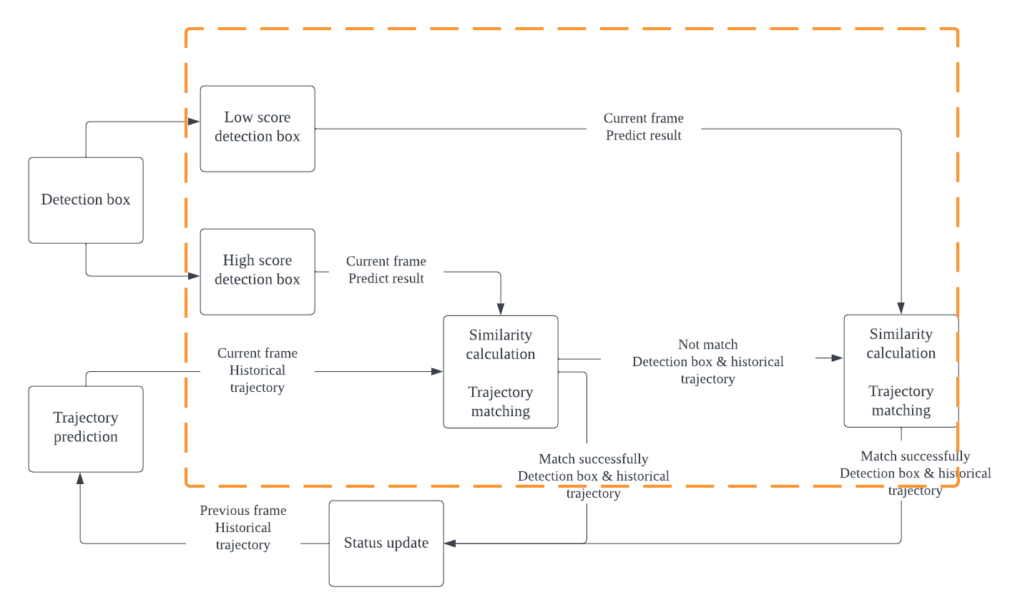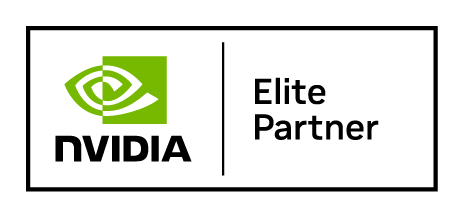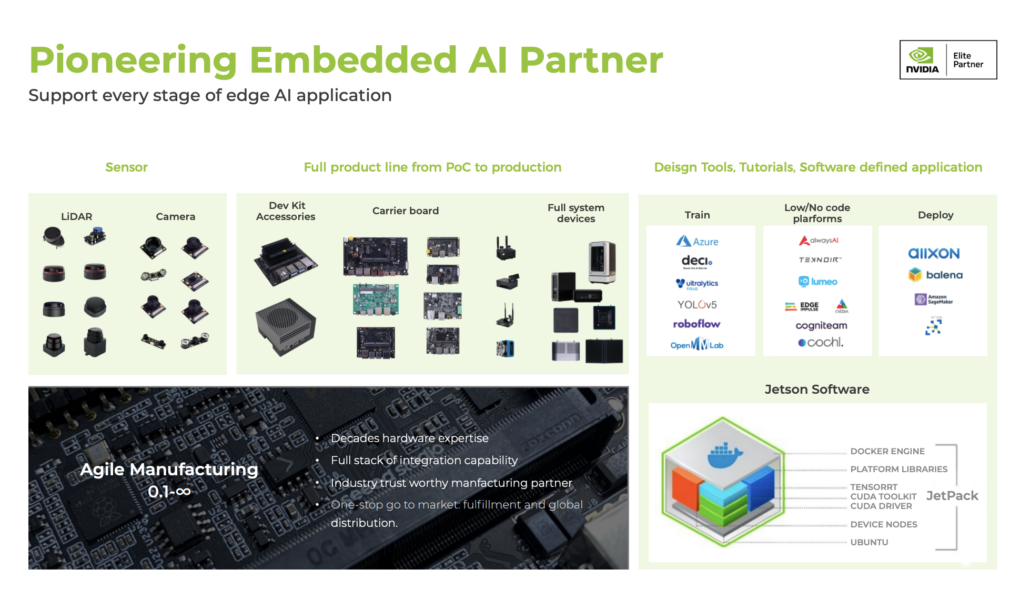People Flow Analysis in Public Space – Especially Avoid Missing Detection due to Occlusion
Hardware: NVIDIA Jetson Orin NX
Application: People Flow Analysis for Dense Crowd
Industry: Public Safety
Deployment Location: Europe
“How many people come in and out every day?” “Is this specific place too crowded?” In today’s fast-paced world, the efficient management of public spaces has become more critical than ever. Shopping malls, railway stations, subways, and other bustling public places serve as the lifeblood of our cities, These key data points are not just crucial for business optimization; they also play a pivotal role in shaping relevant public health safety prevention and control measures.
Challenge
There might be several challenges that occurred during exploring the proper solution:
Firstly, when crowd density reaches its zenith, the risk of missing detections and false alarms skyrockets. In high-density scenarios, occlusions between individuals can confound the model, leading to both missed and spurious identifications.
Secondly, in dynamic environments, conventional sensors and target detection techniques struggle to accurately monitor pedestrian movement. They often fail to discern pedestrian orientation and individual IDs, making it arduous to precisely track the number of people entering and exiting a designated area within a given timeframe. Moreover, the reidentification of pedestrians who reappear after temporary occlusion presents a formidable challenge.
Lastly, the presence of numerous distractions, such as mannequins and billboards, commonly found in shopping malls, significantly interferes with the accuracy of the statistics. These obstructions can lead to misidentifications and skewed data, making it imperative to devise a solution that overcomes these intricate hurdles for reliable people flow analysis.

Solution
The FairMOT model, which builds upon Anchor Free’s CenterNet detector, offers a novel approach by seamlessly fusing deep and shallow features to cater to the detection and ReID (Re-Identification) tasks separately. This unique feature fusion not only ensures fairness between these two essential tasks but also leads to a substantial improvement in real-time multi-target tracking accuracy) could be a good choice to effectively address the intricate challenges of people flow statistics in various scenarios. The human traffic statistics task necessitates the detection of both the category and location information of the target, coupled with the crucial task of establishing associations between frames to prevent the same person from being erroneously counted multiple times.
Recognizing that different shooting angles and varying personnel densities demand tailored solutions, we should consider this issue with two distinct training methods, both deployable on NVIDIA Jetson Orin NX:
- Sparse Personnel Scenes: In scenarios with relatively sparse personnel, the solution leverages training data from diverse datasets. The model performs comprehensive whole-body detection and tracking of pedestrians within the scene. It identifies pedestrians and displays the count of individuals in the upper left corner of each frame, thus achieving accurate pedestrian flow statistics.
- Dense Personnel Scenes: In scenes characterized by dense crowds, where occlusion among individuals is prevalent, a different approach is essential to maintain accuracy. In such cases, we can employ a head-tracking method based on dedicated training datasets. This approach focuses on detecting and tracking pedestrians’ heads within the scene, facilitating reliable people flow statistics in conditions where overall pedestrian detection might lead to increased missed detection rates.

[Ready to get started with the crowd statistics demo through a low-developing level platform? Try our wiki of CVEDIA wiki guidance!]
In order to deal with the problem of missing detection and improve the consistency of the trajectory, the following logistic architecture can be used to remove the background from the low-score detection results while retaining the high-score detection results and excavating the real object:

Seeed: NVIDIA Jetson Ecosystem Partner

Seeed is an Elite partner for edge AI in the NVIDIA Partner Network. Explore more carrier boards, full system devices, customization services, use cases, and developer tools on Seeed’s NVIDIA Jetson ecosystem page.

Join the forefront of AI innovation with us! Harness the power of cutting-edge hardware and technology to revolutionize the deployment of machine learning in the real world across industries. Be a part of our mission to provide developers and enterprises with the best ML solutions available. Check out our successful case study catalog to discover more edge AI possibilities!
Take the first step and send us an email at edgeai@seeed.cc to become a part of this exciting journey!
Download our latest Jetson Catalog to find one option that suits you well. If you can’t find the off-the-shelf Jetson hardware solution for your needs, please check out our customization services, and submit a new product inquiry to us at odm@seeed.cc for evaluation.
